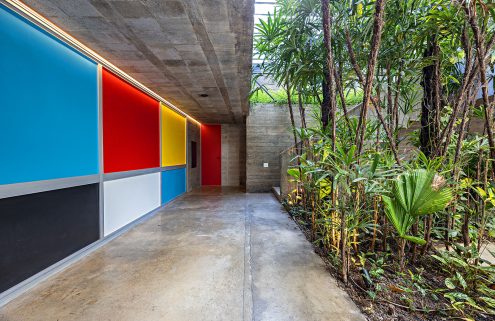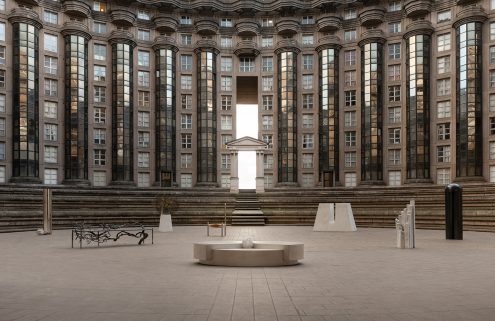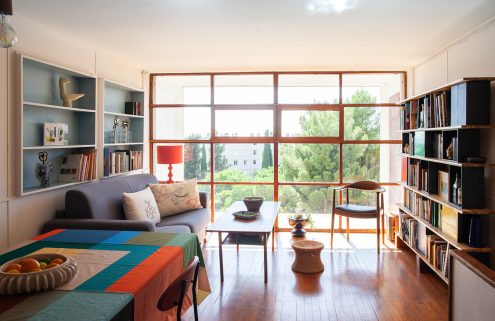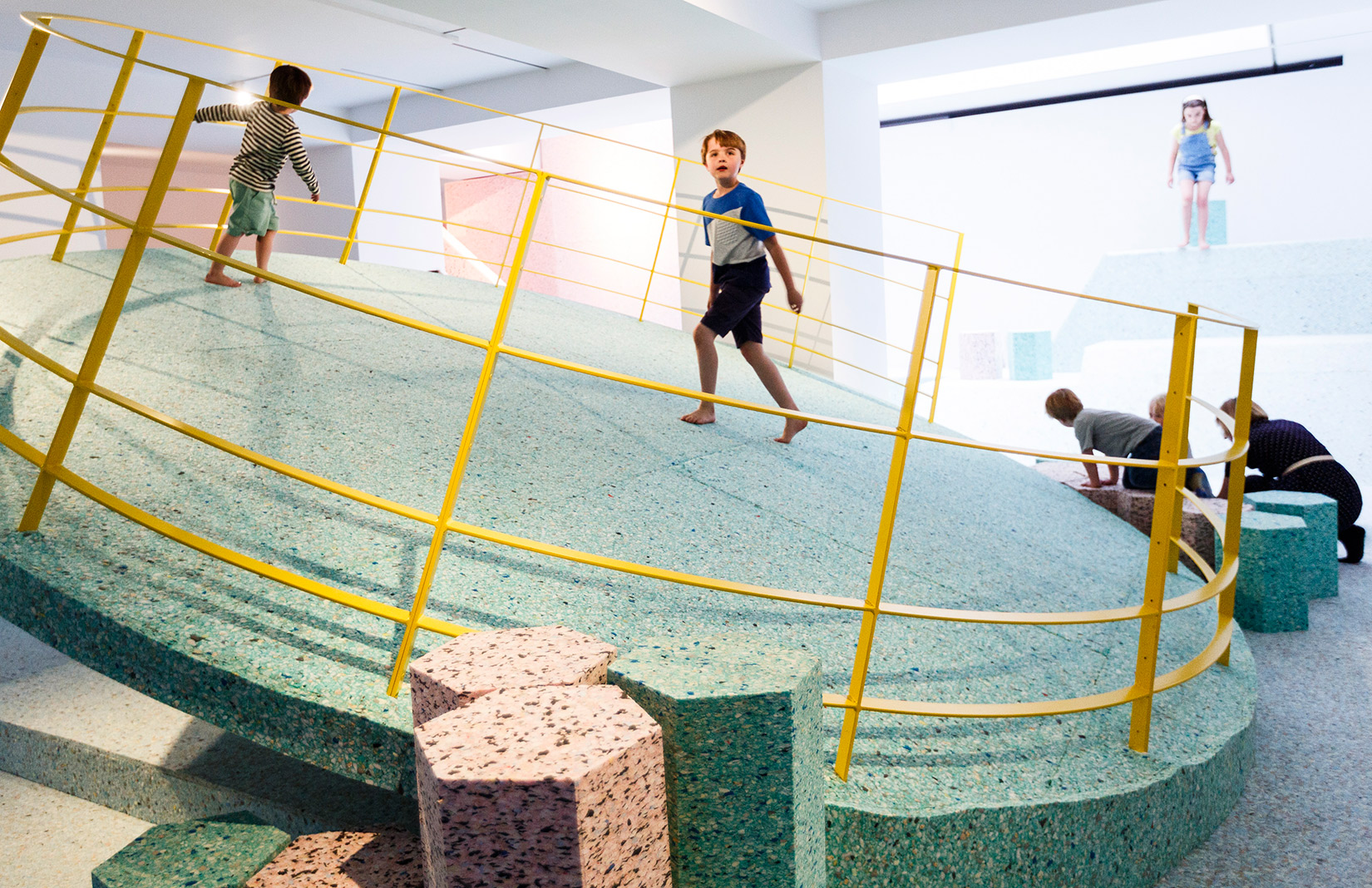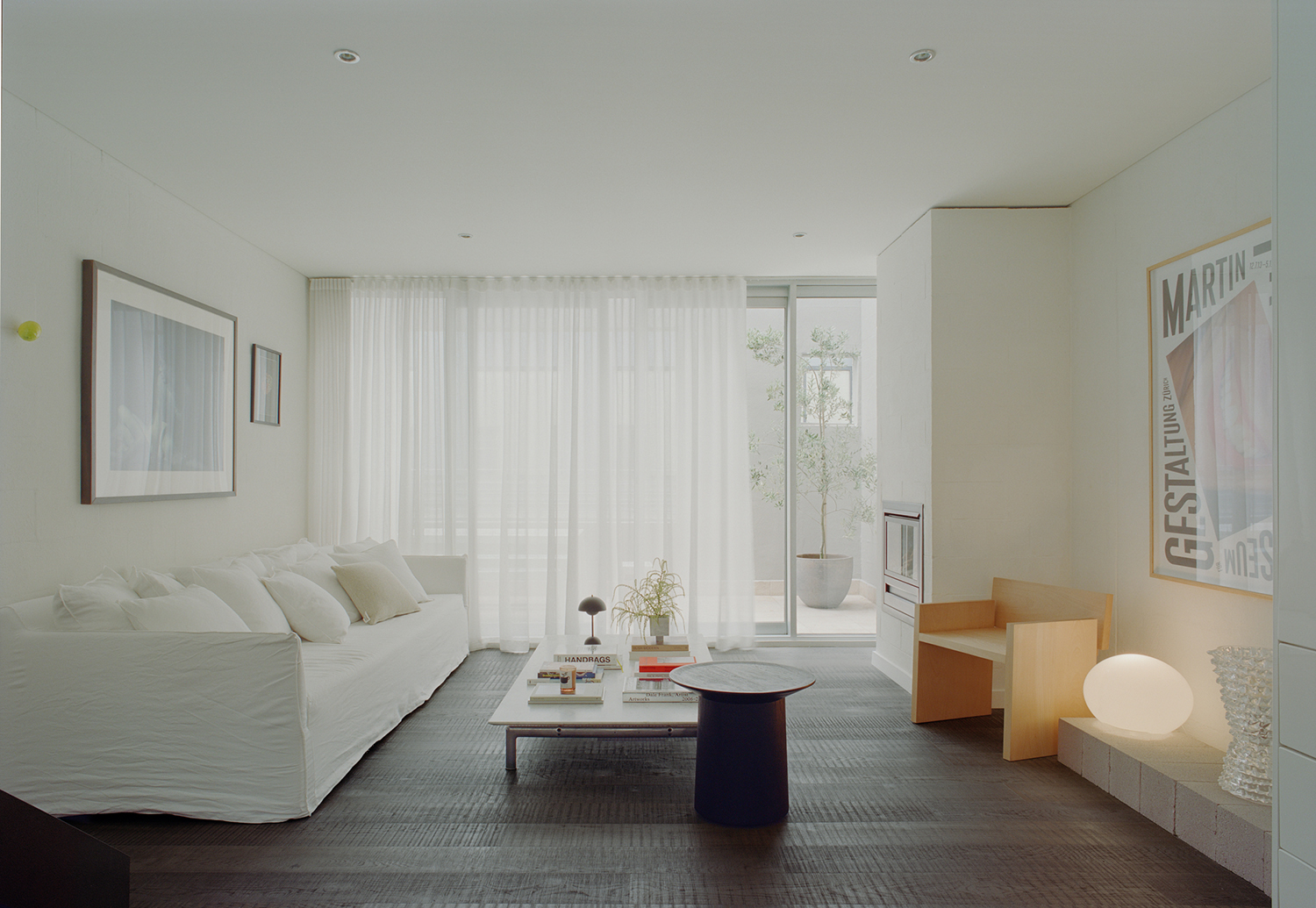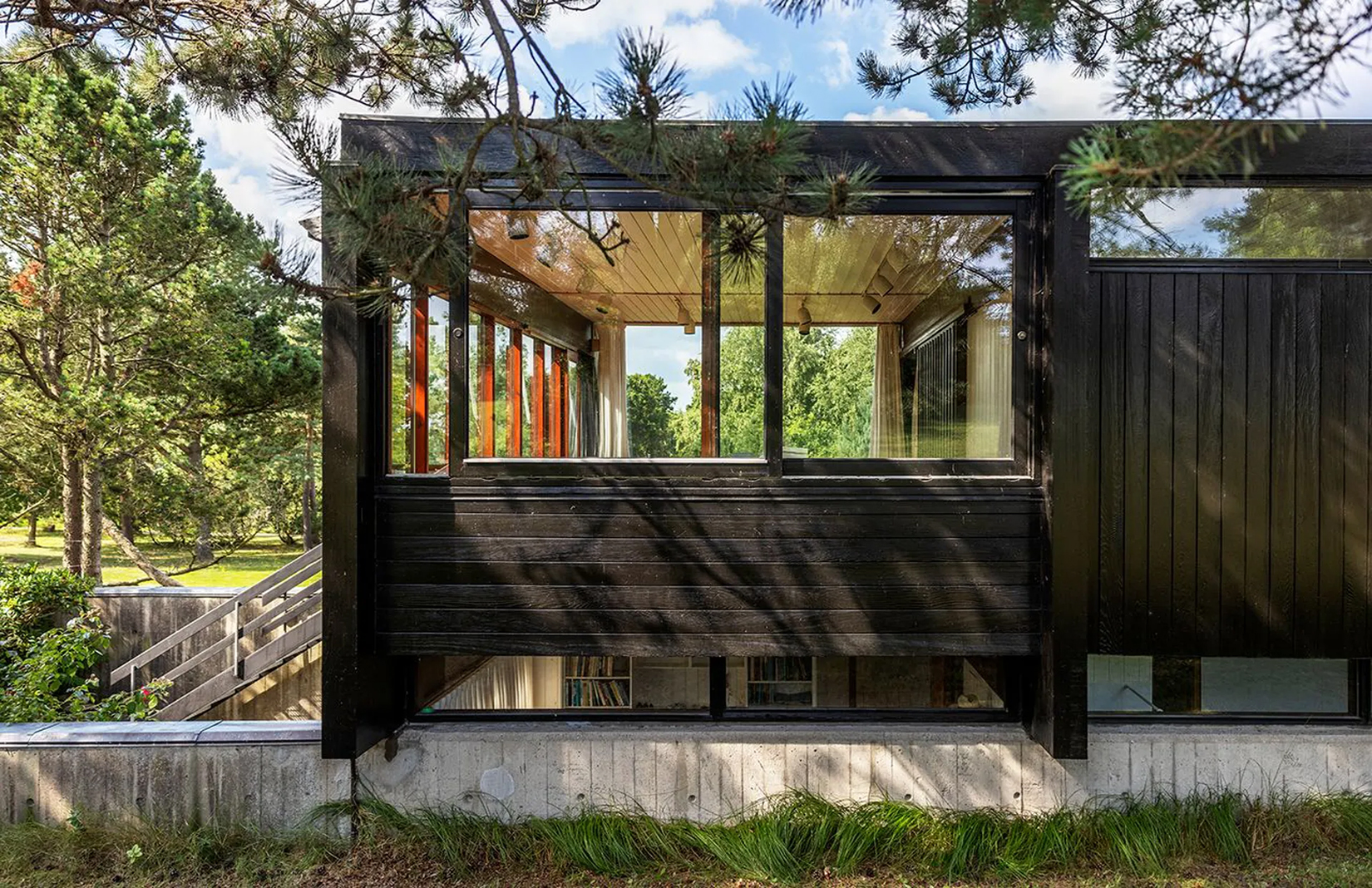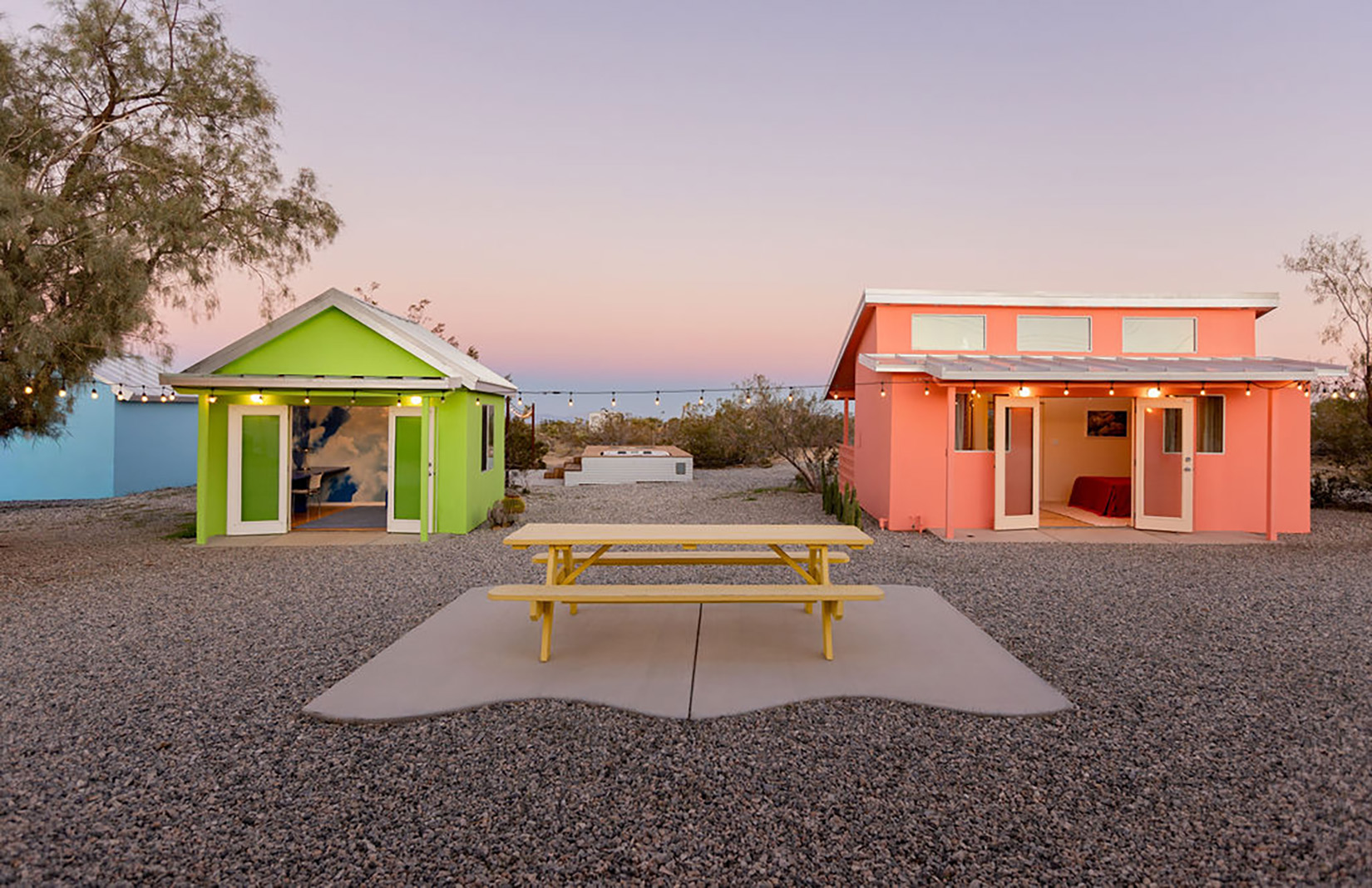After WWII, London children gave up playing on bomb sites as a new type of playground started to spring up. They were created to sit at the base of the Brutalist housing estates which were replacing war-damaged housing, and borrowed heavily from that aesthetic.
Well-meaning architects and urban planners intended them as safe places to inspire children’s imagination. But these sculptural playgrounds were mostly built of Brutalism’s favourite material, concrete, and to the modern eye appear perilously unwelcoming.
The creators of a new exhibition at RIBA’s Architecture Gallery have now reinvented the unforgiving forms in a way that encourages 21st-century adults and children to park their preconceptions.
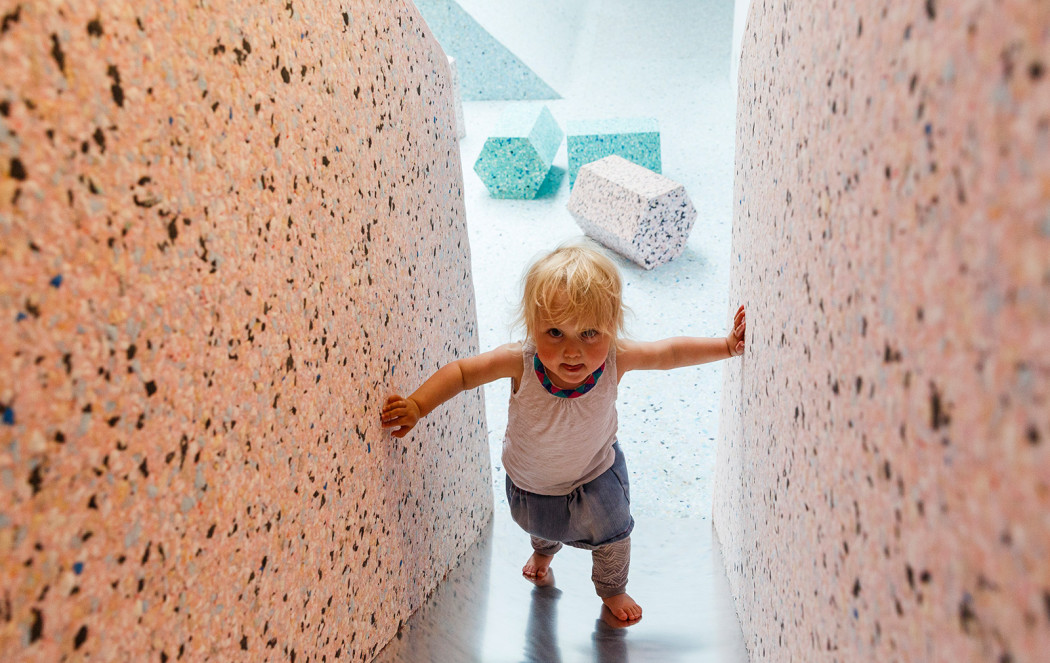
Photography: Tristan Fewings/Getty Images for RIBA
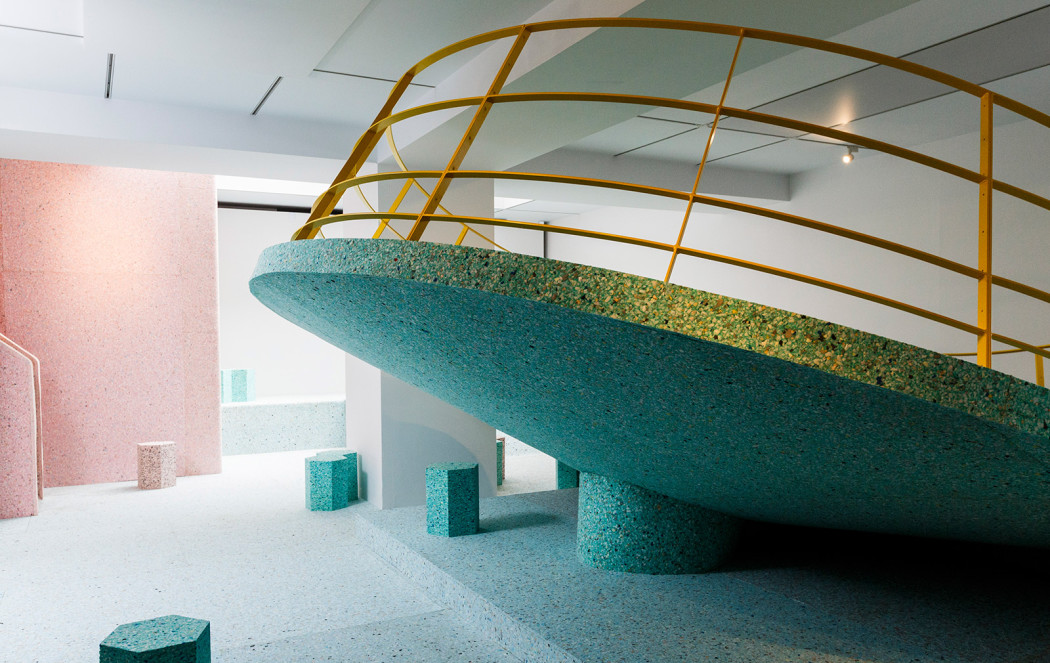
Photography: Tristan Fewings/Getty Images for RIBA
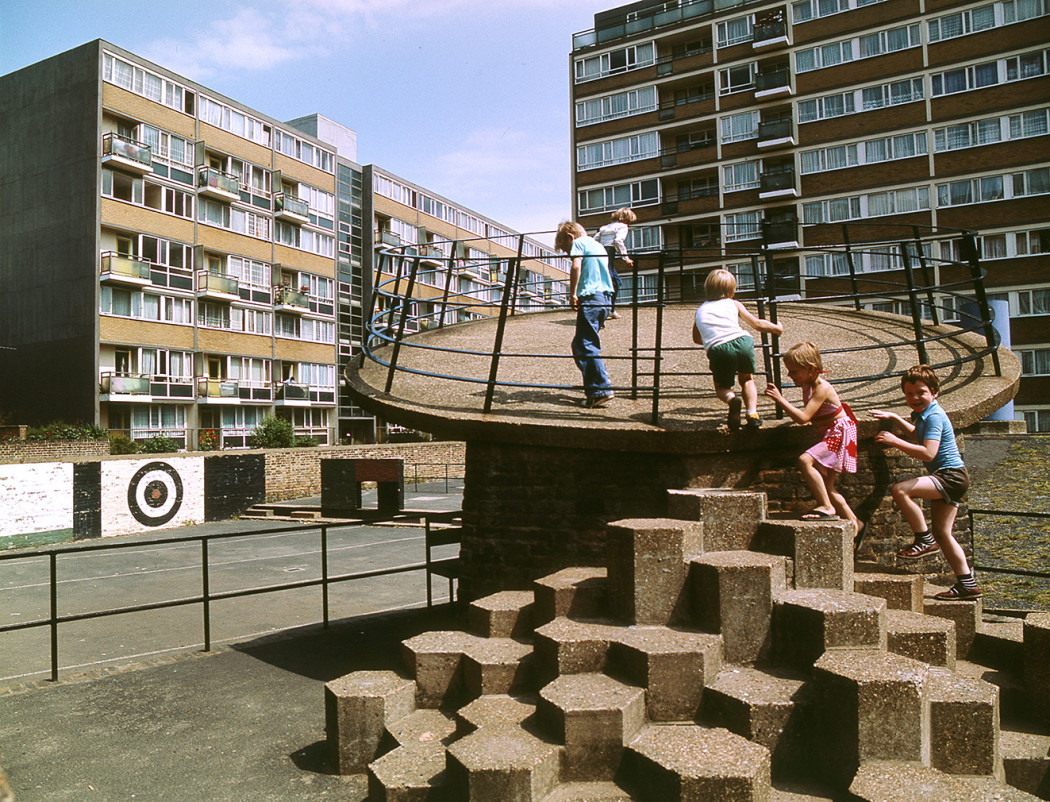
An archive image of Churchill Gardens Estate. Photography: John Donat/RIBA Library Photographs Collection
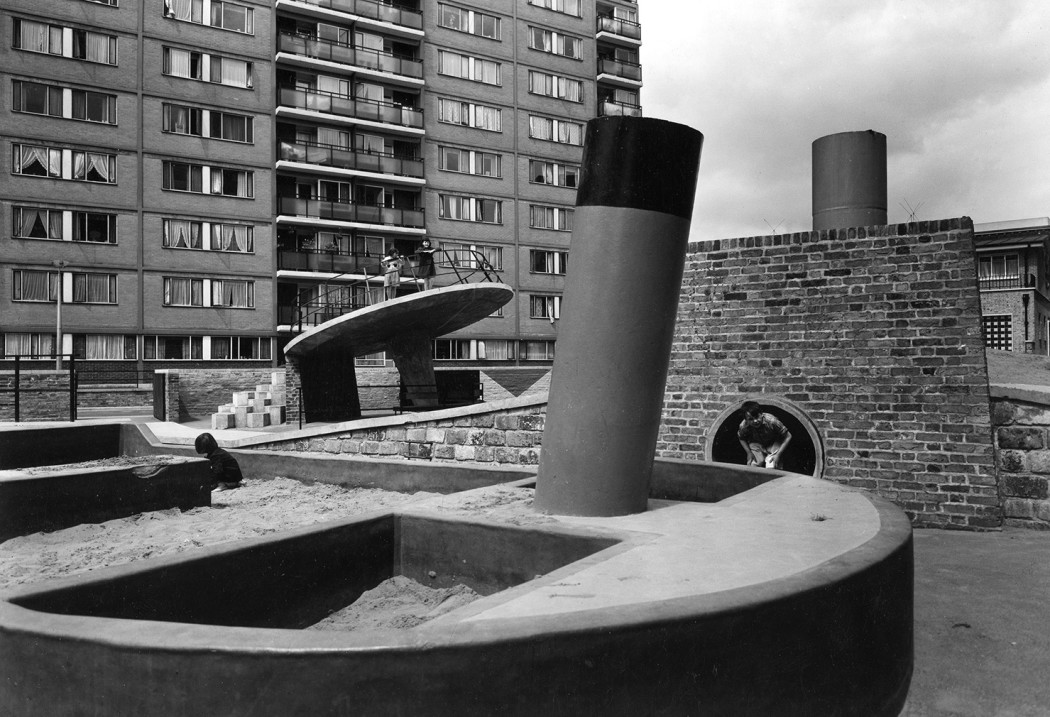
Churchill Gardens, 1956. Photography: John Maltby/RIBA Library Photographs Collection
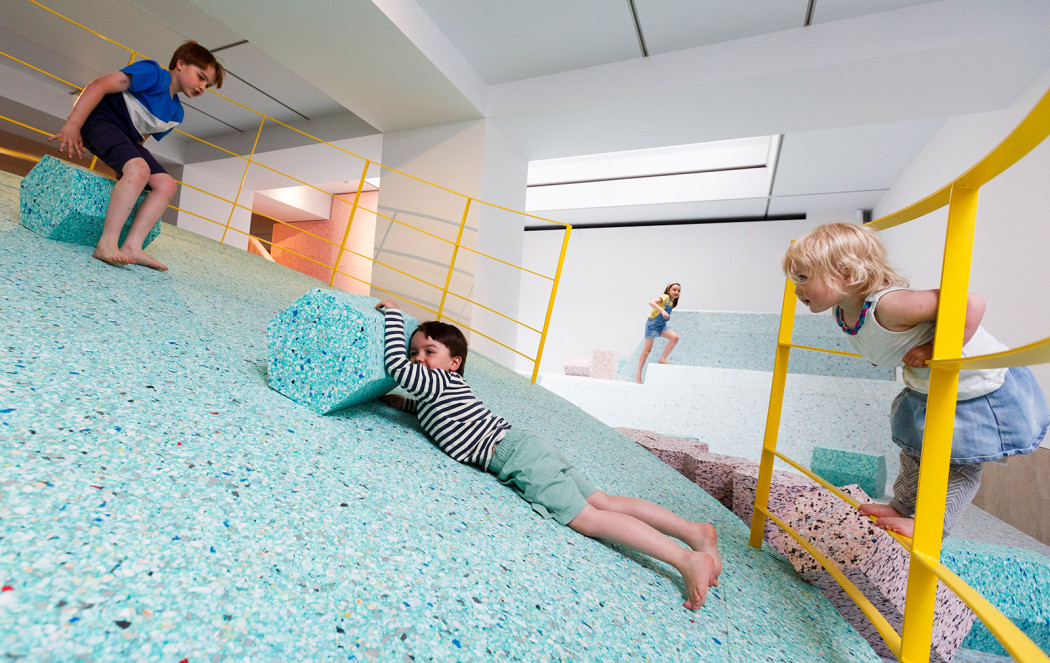
Photography: Tristan Fewings/Getty Images for RIBA
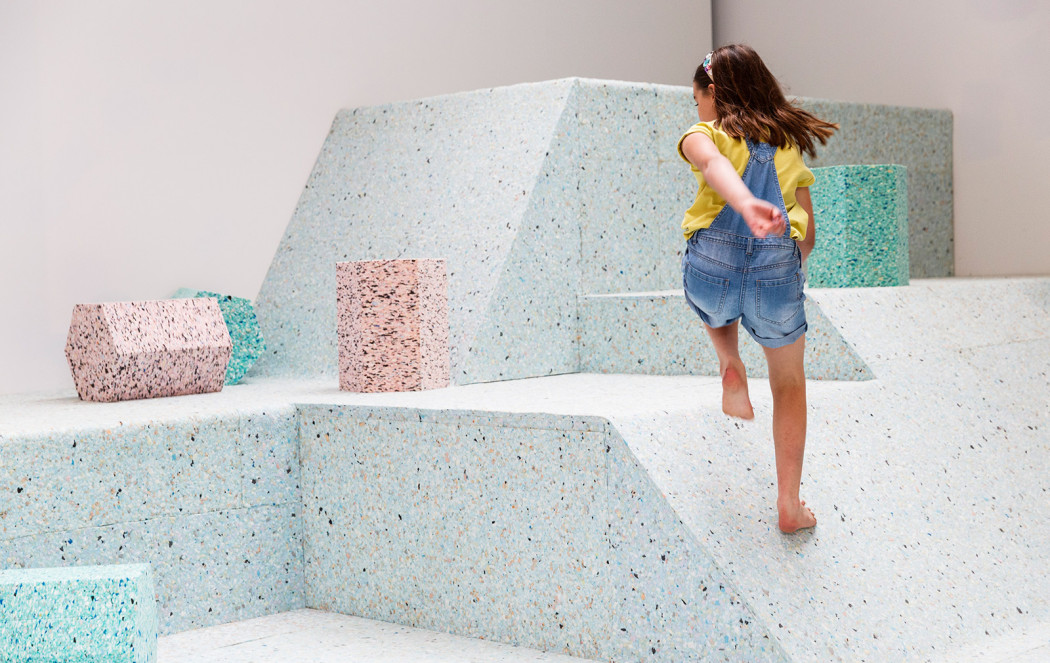
Photography: Tristan Fewings/Getty Images for RIBA
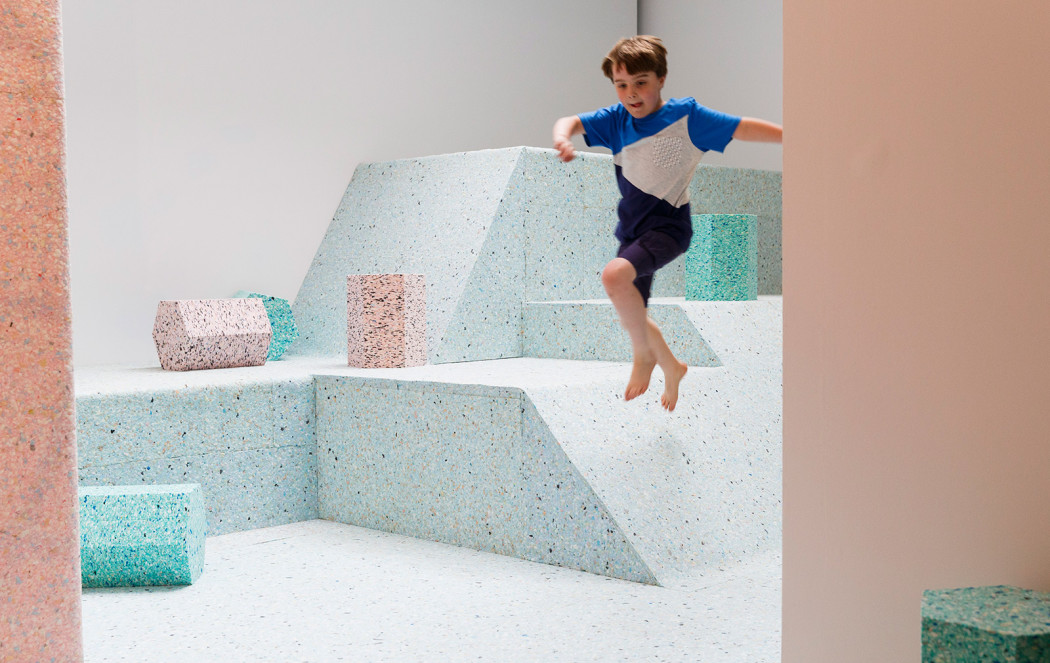
Photography: Tristan Fewings/Getty Images for RIBA
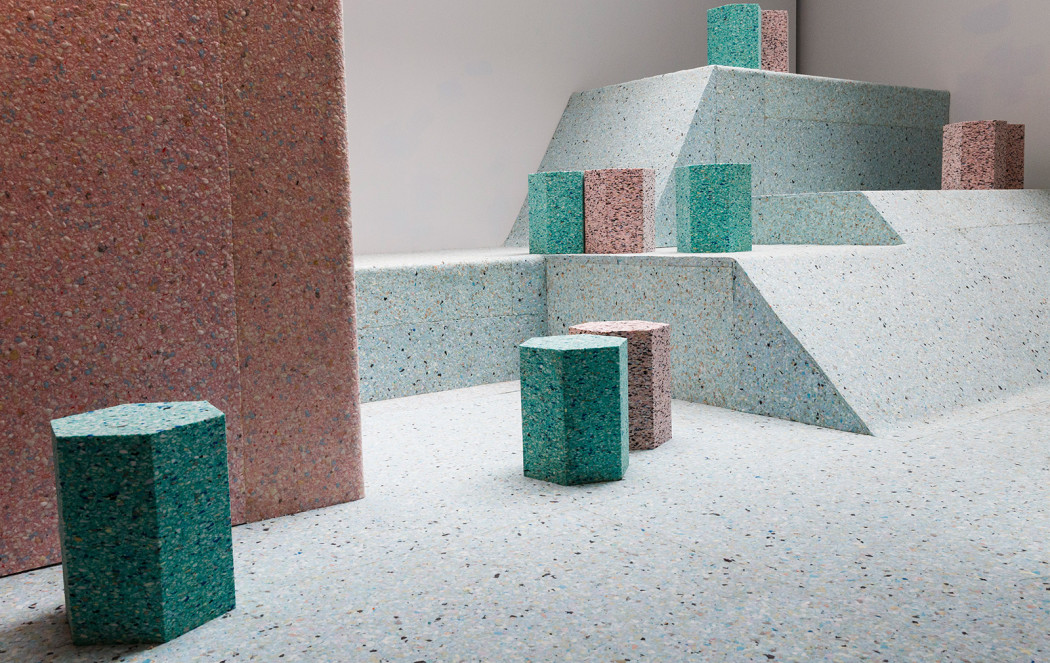
Photography: Tristan Fewings/Getty Images for RIBA
The Brutalist Playground is the work of artist Simon Terrill and architecture collective Assemble, nominated for the 2015 Turner Prize for their revitalisation of a cluster of terraced houses in Liverpool. It’s the latest in a stream of projects blurring the boundaries between art and architecture, including Carsten Holler’s equally playful Hayward Gallery exhibition, and the TREExOFFICE in Hoxton Square: a workspace built in a tree canopy. The office is designed by a team of artists and architects, and joins The Brutalist Playground on the London Festival of Architecture programme.
After poring over RIBA’s archives, Assemble and Terrill drew on the architecture of a handful of play areas and reworked them in pastel-coloured, high-density foam.
The effect is both disconcerting and beguiling. A circular platform perched on a plinth at a precarious angle is the centrepiece. Called the flying saucer, the original piece stood between the high-rise blocks of Churchill Housing Estate in London’s Pimlico. RIBA’s version is a 1:1 scale model, as are the squashy hexagonal stools at its base.
While visitors bounce on the stools or lurch across the flying saucer, Terrill’s accompanying film depicting the original playgrounds is in sharp and sharp-edged contrast.
The Brutalist Playground runs from 10 June to 16 August 2015 at the RIBA’s Architecture Gallery, 66 Portland Place, London
